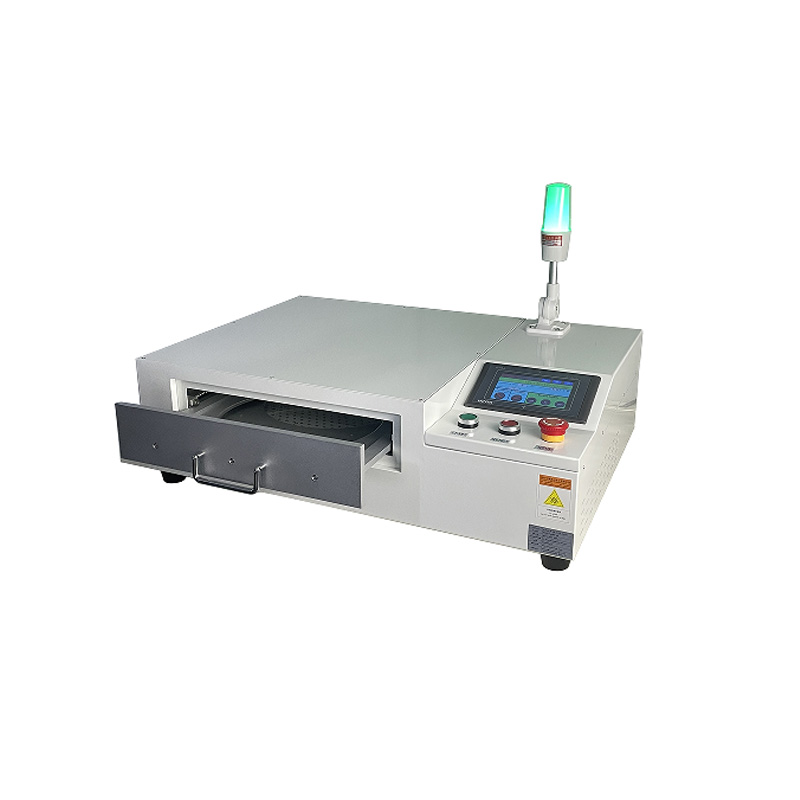2025-10-14 11:18:27
The difference between UV LED Curing Systemwith and without nitrogen addition is significant, andwhethernitrogen is necessary depends entirely on your process requirements.
Below is a detailed explanation of the differences, advantages, disadvantages, and how to determine if nitrogen is needed.
Core Difference: With Nitrogen vs. Without Nitrogen
The fundamental difference lies in the oxygen concentration in the working environment:
Without nitrogen:The process is carried out in normal air, with an oxygen concentration of approximately 21%.
With nitrogen:High-purity nitrogen is filled into the process chamber to reduce the oxygen concentration to an extremely low level (usually below 100 ppm, or even as low as 10 ppm).
This difference in oxygen concentration directly leads to variations in several key aspects, as detailed below.
Detailed Comparison of Differences
|
Comparison Dimension |
Without Nitrogen (In Air) |
With Nitrogen (Low-Oxygen Environment) |
|
1.Degumming Efficiency/Speed |
Slow. Oxygen "quenches" free radicals generated by UV light, competing with colloid molecules in reactions and severely inhibiting the degumming process. |
Significantly faster. The inhibitory effect of oxygen is eliminated, allowing UV energy to be fully used to break the chemical bonds of colloid molecules. Efficiency can be increased by several to dozens of times.
|
|
2.Degumming Effect/Completeness |
May be incomplete. Colloid residues are likely to remain on the wafer surface or in deep holes, especially for structures with large areas or high aspect ratios. |
More thorough and uniform. Effectively removes hard-to-clean residual colloid, ensuring a clean and consistent wafer surface and improving product yield. |
|
3.Process Temperature |
Relatively high. To achieve a certain degumming rate, the substrate working temperature usually needs to be increased (e.g., above 250°C). |
Can be significantly reduced. Efficient degumming can be achieved even at lower temperatures (e.g., 100°C - 150°C), making it a low-temperature process. |
|
4.Damage to Devices |
Potential for significant damage. Higher process temperatures may cause thermal damage to temperature-sensitive devices, pre-formed shallow junctions, metallization layers, etc. |
Minimal damage. The low-temperature process makes it ideal for advanced manufacturing processes and temperature-sensitive devices (e.g., FinFETs, 3D NAND). |
|
5. Surface Condition |
May cause slight oxidation of metal layers or changes in surface states due to high temperatures and the presence of oxygen. |
Creates an inert environment that better maintains the original state of the wafer surface and prevents oxidation. |
|
6. Operating Cost |
Low. No nitrogen consumption. |
High. Requires continuous consumption of high-purity nitrogen, increasing operating costs. |
Whether nitrogen functionality is needed depends on your application field, process node, and product yield requirements.
Below are the situations where adding nitrogen is recommended or optional.
Applicable for process nodes 90nm and below.
Used in temperature-sensitive devices such as FinFET, 3D NAND, and DRAM.
Necessary for photoresist removal in high-aspect-ratio structures.
Ensures high yield and stable process performance.
Includes compound semiconductors (GaAs, GaN), flexible electronics, and MEMS.
Also suitable for wafers that have completed metal wiring or doping and cannot withstand high temperatures.
Provides a controlled environment for exploring process parameters and obtaining optimal interface characteristics.
For micron-level or 0.35μm and above processes, where temperature and residue requirements are less strict.
For consumer-grade chips or devices where the cost increase from nitrogen does not justify the yield improvement.
If UV degumming in air can already meet the process requirements.
Adding nitrogen helps eliminate oxygen inhibition and supports low-temperature, clean, and low-damage degumming. It is essential for advanced semiconductor manufacturing and applications that demand high precision and yield.
For traditional or cost-sensitive processes, skipping nitrogen can be a practical choice, but it may reduce efficiency, cleanliness, and process stability.
